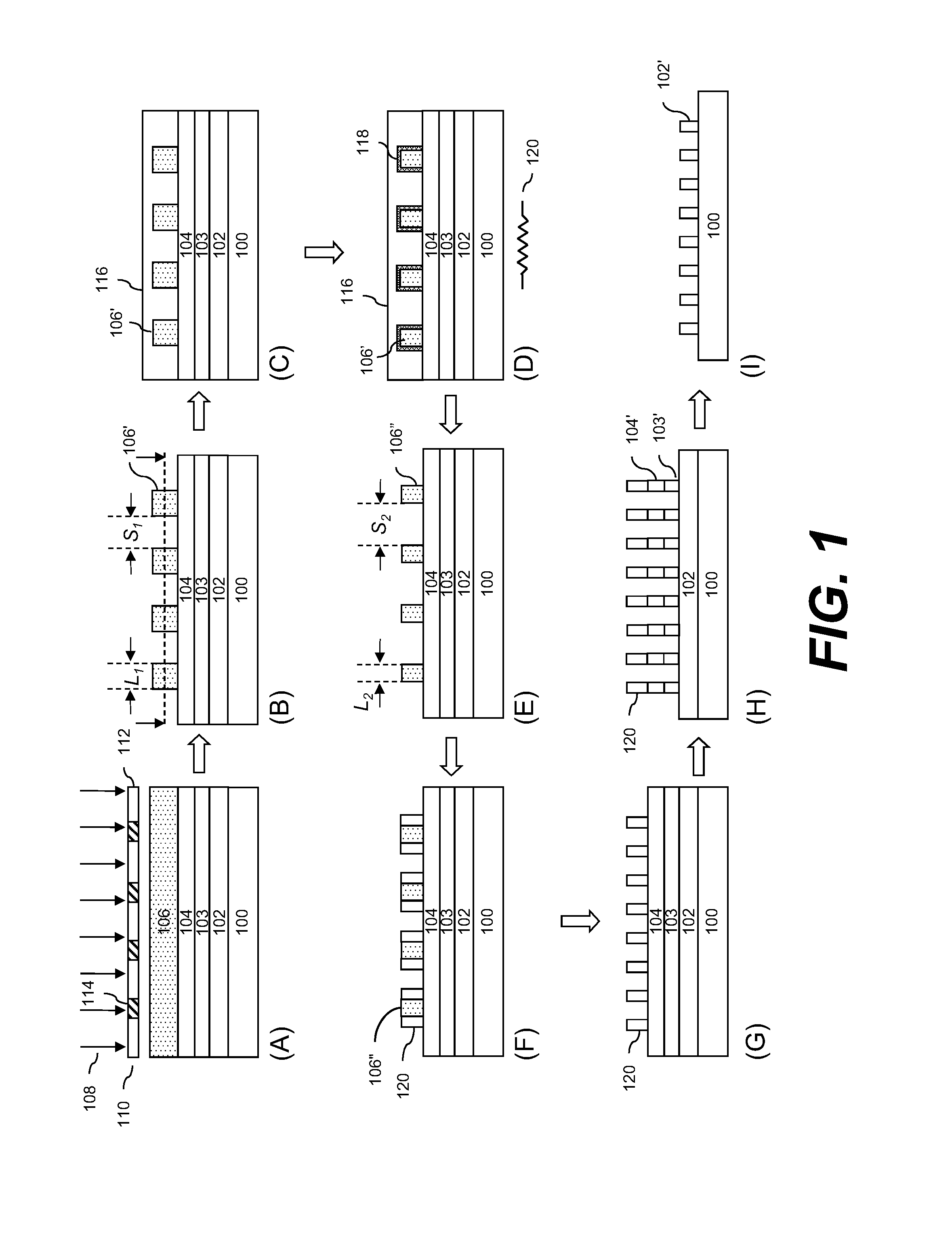Photoresist pattern trimming methods
a technology of photoresist and pattern, applied in the field of electronic device manufacturing, can solve the problems of inability to achieve a good process window for isolated lines and posts through direct lithographic imaging, and the difference in solubility characteristics between exposed and unexposed regions of resist, so as to achieve a significant improvement of the process window for the formation of patterns such as isolated lines and posts
- Summary
- Abstract
- Description
- Claims
- Application Information
AI Technical Summary
Benefits of technology
Problems solved by technology
Method used
Image
Examples
example 1
PTC 1
[0047]2.813 g copolymer of t-butyl acrylate / methacrylic acid (7 / 3 of mole ratio), 0.087 g of TAG 1, 19.420 g decane and 77.680 g 2-methyl-1-butynol were mixed until all components were dissolved. The resulting mixture was filtered with a 0.2 micron Nylon filter.
example 2
PTC 2
[0048]2.610 g of copolymer of t-butyl acrylate / methacrylic acid (7 / 3 of mole ratio), 0.290 g of TAG 2, 24.275 g decane and 72.825 g 2-methyl-1-butynol were mixed until all components were dissolved. The resulting mixture was filtered with a 0.2 micron Nylon filter.
Lithographic Processing
example 3
[0049]Photoresist A was spin-coated on an organic bottom antireflective coating (BARC AR™124 23 nm / AR™26N 77 nm (Rohm and Haas Electronic Materials LLC)) over 12 inch silicon wafers and softbaked (SB) at 95° C. for 60 seconds, to a thickness of 700 Å. Opticoat™ OC2000 topcoat material (Rohm and Haas Electronic Materials LLC) was coated on the resist to form an immersion topcoat layer. The coated wafers were exposed with an ASML ArF 1900i immersion scanner with NA=1.35, Dipole 35Y illumination (0.9 / 0.635sigma), plus x polarization, and post-exposure baked (PEB) at 90° C. for 60 seconds. The coated wafers were treated with 0.26N (normal) aqueous tetramethylammonium hydroxide solution to develop the imaged resist layers to form 45 nm 1:1 line and space resist patterns. Linewidth was measured for one of the patterned wafers. A 70 nm thick layer of the trimming composition of Example 1 (PTC 1) or Example 2 (PTC 2) was spin-coated over another of the patterned wafers, baked at the conditi...
PUM
 Login to View More
Login to View More Abstract
Description
Claims
Application Information
 Login to View More
Login to View More - R&D
- Intellectual Property
- Life Sciences
- Materials
- Tech Scout
- Unparalleled Data Quality
- Higher Quality Content
- 60% Fewer Hallucinations
Browse by: Latest US Patents, China's latest patents, Technical Efficacy Thesaurus, Application Domain, Technology Topic, Popular Technical Reports.
© 2025 PatSnap. All rights reserved.Legal|Privacy policy|Modern Slavery Act Transparency Statement|Sitemap|About US| Contact US: help@patsnap.com



